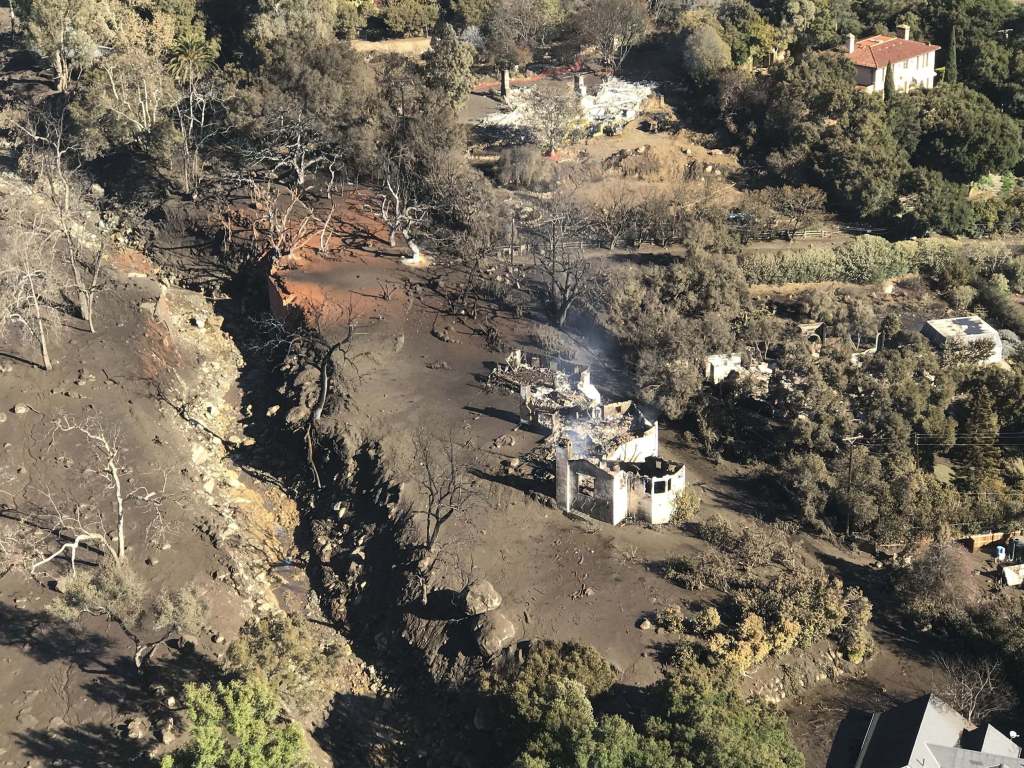As predicted, California’s epic 2017 wildfire season has been followed by catastrophic mudslides. “The massive wildfires that scorched parts of Southern California last month left hillsides devoid of vegetation and covered with ash and a dried-out layer of topsoil,” reported the Atlantic (see: “Photos of California’s Deadly Mudslides,” by Alan Taylor). “On Tuesday, heavy rains fell north of Los Angeles, turning many of these hillsides into torrents of mud and boulders that destroyed dozens of homes and damaged hundreds more.”
“The disaster struck on Tuesday after heavy rains soaked the area near Montecito, where vegetation had been denuded by the largest wildfire in California’s history,” Reuters reported (see: “Crews ramp up effort to rescue live victims of California mudslide,” by Paula Lehman-Ewing.) “Sodden hillsides gave way, unleashing a torrent of mud, water, uprooted trees and boulders onto the valley below and causing what the police described as ‘traumatic injuries’ to the victims, who ranged in age from 3 to 89.”
“At least 18 people have died in the Montecito mudslides and seven people were still unaccounted for Friday, as hope waned that any survivors remained amid muck, boulders and toppled trees,” reported the Los Angeles Times (see: “101 Freeway, overwhelmed by Montecito mudslide, to remain closed indefinitely,” by Louis Sahagun, Matt Hamilton, Cindy Chang and Harriet Ryan).
“The bodies of several victims were dragged — along with cars and other debris — a mile away from their homes, in some cases all the way to the beach,” reported the New York Times (see: “What the Aftermath of a Deadly Mudslide Looks Like,” by Jennifer Medina).
